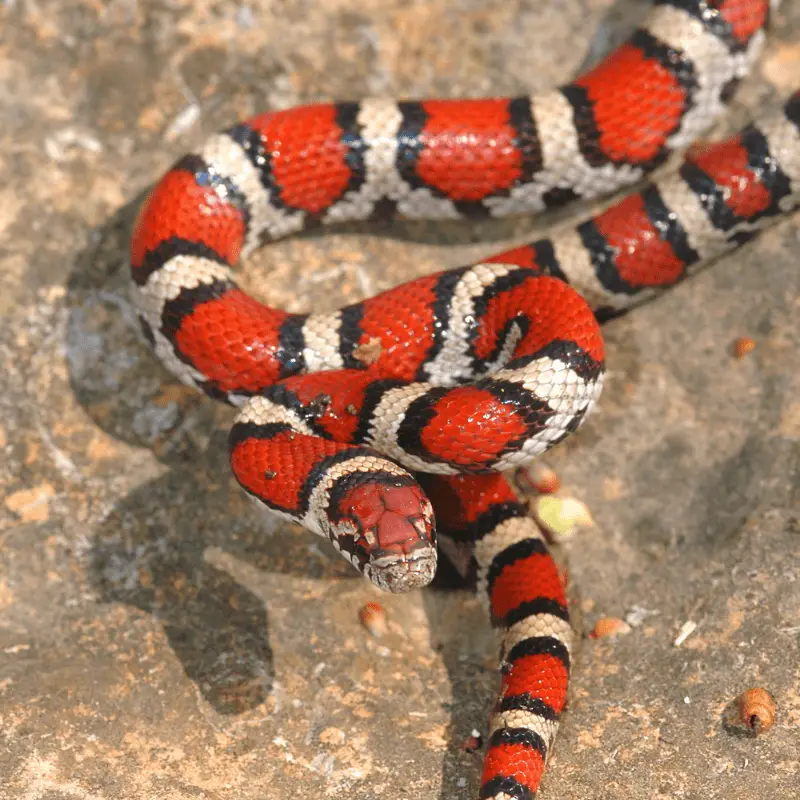Striking patterns and bright colours are the two most essential features of milk snakes. These snakes are non-venomous snakes that can be found in a wide geographical range. You can find milk snakes throughout South and North America. Even though milk snakes are non-venomous, they often get confused with dangerous snakes, like Coral snakes or Copperheads.
The truth is, unlike these venomous snakes, milk snakes pose no threat to humans. They are considered one of the most popular pet snake options across the world.
Milk snakes are different species of Kingsnakes. Both of these snakes belong to the generous Lampropeltis. This Greek term means Shiny Shields. This name goes exceptionally well with this genus as both of these snakes have very glossy and have brightly coloured scales.
Scientists have recognised 24 different subspecies of milk snakes. Some scientists even suggested that these next should be split into several species. The Scarlet Kingsnake was categorised as one of the subspecies of milk snake till 2006. During that year, scientists decided that the Kingsnake Should be a different species than the milk snake.
There is a myth behind the name of these snake species. These snakes get their name from the legend that they tend to drink milk from the nursing cows. In reality, scientists have found no truth behind these myths. They explain that it is scientifically impossible for milk snakes to drink milk from nursing cows. The reason is snakes do not possess any lips, for which they can’t suck out milk.
Species Overview
- Scientific Name: Lampropeltis triangulum
- Popular Name: Milk Snake
- Length: Varies from species to species with 20 cm to 132 cm range.
- Weight: Varies from species to species.
- Life Expectancy: 22 years in captivity
- Venomous: No
Geographical Range
Milk snakes cover a wide geographical range. From the Southeastern section of Canada through most of the continental United States and Central America, you will find these snakes in the wild. You can also spot milk snakes in western and South Ecuador, Northern South America, and the northern section of Venezuela.
Location
- Central America
- Continental US
- North of Venezuela
- Northern South America
- South Ecuador
- Southeastern Canada
- Wester Ecuador
Appearance
The appearance of the milk snakes changes widely due to the colouration. The only commonality that these 24 types have is the banded colouration structure. However, the colour of these bands can vary from white to black to red. Alternating bands of various colours are also quite common. In most cases, the dark bands get outlined with black scales. Some of the milk snakes have a light V or Y shaped on their necks.
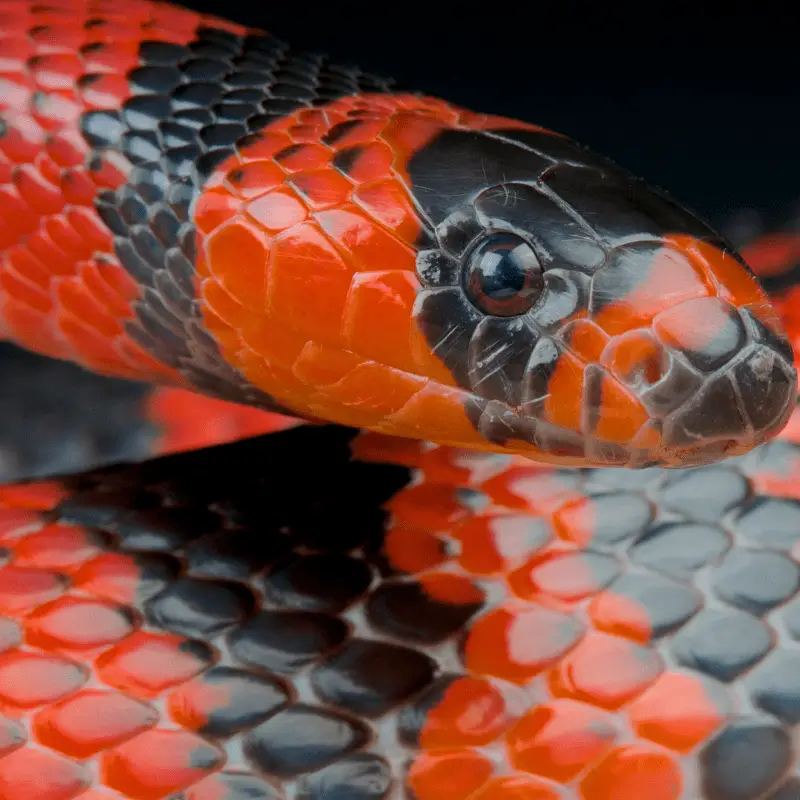
Size
The length of the milk snakes generally exceeds 60 CM. Some of the largest specimens are known to reach about 120 to 132 CM in size. The milk snakes are considered the smallest subspecies of Kingsnakes. In the North American region, adult snakes in the wild gain about 1.3 to 7.9 lb of weight. Length-wise, milk snakes of this region reach a maximum length of 90 cm. However, you can spot larger milk snakes in captivity. Milk snakes can gain weight up to 1.65 to 3.09 lb. The Peth milk snakes can also be larger lengthed as well compared to the snakes in the wild.
When these snakes reach mature adults, milk snakes are larger compared to females.
Most of the time, milk snakes from tropical regions like Mexico and the South section of America often become bigger than those found in other places.
Some of the milk snake subspecies have a striking resemblance with the venomous Coral snakes. That is what can lead to confusion about these snakes. Scientists think this similarity was an evolutionary reaction that helped the snakes keep the predators at bay. Both the coral snakes and the milk snakes have transverse bands of black, white, and red. Some snakes also have bands yellow.
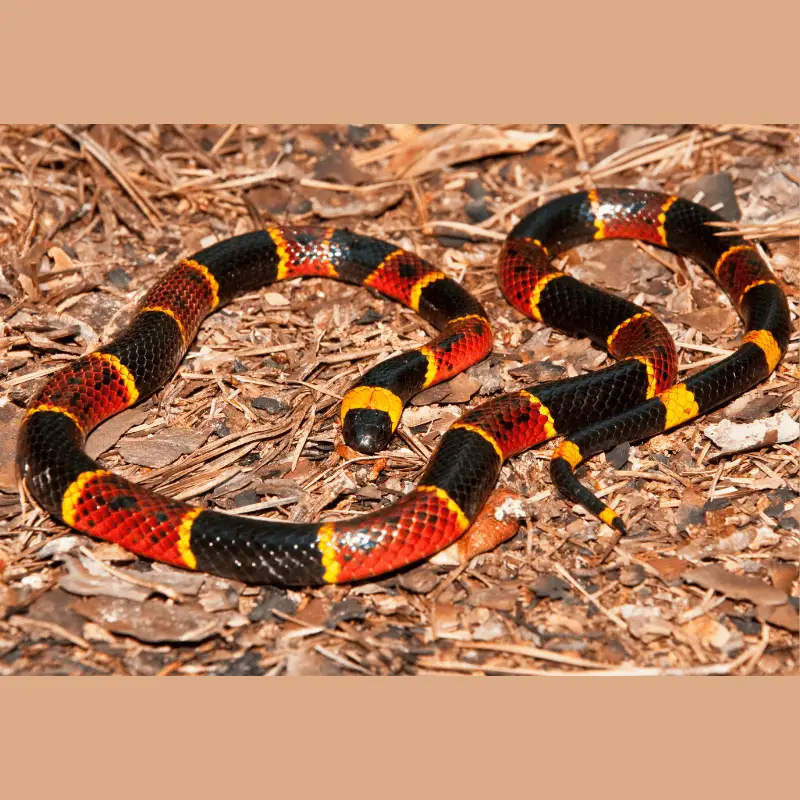
Milk snake babies have a more reddish colour than adults. Due to that reason, these next share a similarity with the venomous copperheads. That is why Juvenile milk snakes are often mistaken and killed. However, if you know what you’re looking for, there are enough differences between these snake species to identify separately.
Habitat
The milk snakes can be found in a variety of habitats. These snakes are found in the mountains, Woodlands, agricultural areas, fields, and rocky outcrops. Some subspecies of milk snakes can also be found in coastal areas, mainly where pine forest exists. You can also find milk snakes as far as cubic and Ontario in North America.
In the United States, you can find milk snakes almost everywhere. Given their white range of habitat, milk snakes are very adaptable to various situations. Even though these snakes are the natural inhabitants of forested areas, they can live in other places. Most of the time, they like to spend their day under the rocks or some other dark places.
Behaviour
Milk snakes are mainly nocturnal. These snakes are primarily active during dusk and night time. However, these snakes do not like hot weather and choose to stay hidden in dark places.
Instead of hibernation, milk snakes tend to have brumation in winter. Brumation is a very similar state to hibernation, but in this case, the animal tends to wake up to drink water. During that time, these snakes stay in a communal den. Most of the time, these communal dens of milk snakes are found in rocks or previous burrows. Sometimes scientists have found that other venomous snakes like rattlesnakes spend their winter in such milk snake dens and vice versa.
Diet
Like most snakes, milk snakes are carnivorous reptiles. They thrive on a wide variety of prey, including small birds and mammals. Some of the common prey of milk snakes are rats, mice, voles, and other rodents that you can only find in agricultural fields. These snakes also prey on other snakes and lizards. They also eat snake and bird eggs whenever it is possible. Sometimes, these milk snakes hunt on their look-alikes, the venomous coral snakes.
Hunting Habits
Milk snakes, for their size, have one of the most powerful constrictors. They heavily wrap their body around their prey and remain in a similar position until the prey’s blood flow stops completely. Once the prey is dead, these snakes tend to swallow it as a whole.
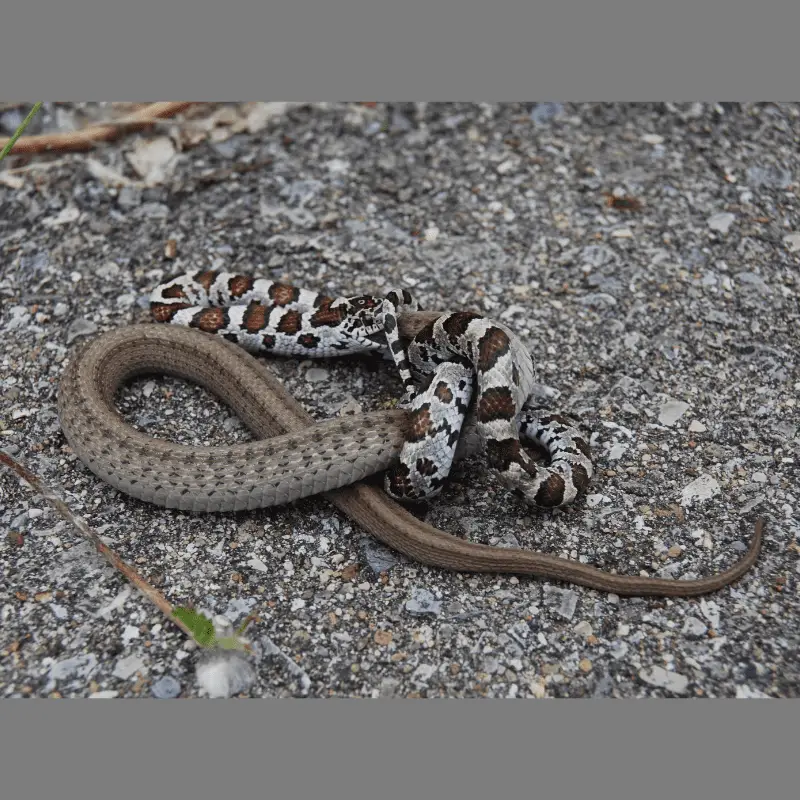
Reproduction and lifespan
The mating season of milk snakes ranges between March to May. These snakes tend to breed right after they come out of their brumation. However, the exact time for breeding depends on a particular subspecies. However, some researchers have pointed out that some milk snakes mate when they are still in their winter den.
In other cases, the female milk snakes tend to leave a pheromone trail behind her when it starts to ovulate. This trail often helps the male to follow the female snakes for mating. The process of milk snakes mating can last for hours at a time.
Eggs
Milk snakes are oviparous, which means the female snakes lay eggs. The female lays to 2 to 17 eggs after about a month of the mating process. Most of the time, milk snakes lay eggs inside the rotting logs. These snakes also build their nests under the rocks or bury their eggs in the soil.
The females try to find a humid and warm place for the perfect incubation of the eggs. The incubation period of these snakes is somewhere between one to two months. The female milk snakes do not guard their eggs after she lays them. Once the eggs are laid, they are left on their own.
Hatchlings
The length of the hatchlings tends to be between 6 to 7 inches. They have a white colouration that gets dull as the baby snakes mature. Juvenile snakes typically depend on invertebrates as their prey. As the snakes grow, they slowly move away from feeding on vertebrates to birds and mammals. The hatchlings reach full maturity between 3 to 4 years of age. Even though the lifespan of milk snakes in the wild is unknown, these snakes can live up to 22 years of age in captivity.
Endangerment status
Milk snakes do not belong to the red list of The International Union for Conservation of Nature. These snakes are also not federally protected in the United States. However, some States save these snakes locally. For example, Montana and Georgia have listed these snakes as a species of concern.
Subspecies
Here are a couple of subspecies of popular milk snakes.
Eastern Milk Snake
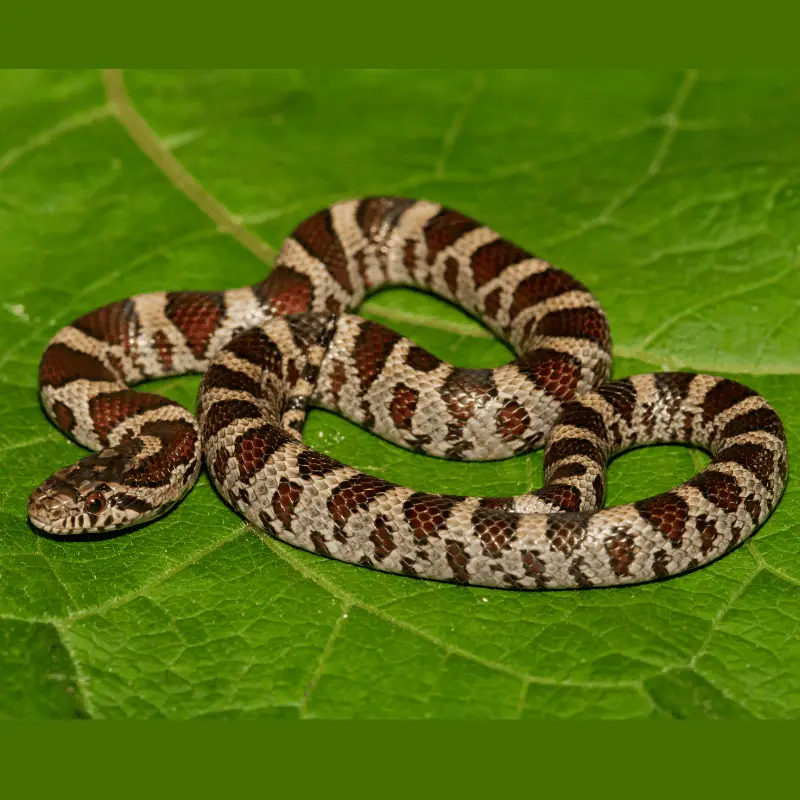
These are probably some of the most popular varieties of milk snakes. You can spot Eastern milk snakes in most of the North-Eastern states of the US. You can spot the snakes as South as Northern Georgia. The Eastern milk snake has a slender body with reddish-brown glossy bands. The belly has a black and white chequerboard look. These snakes can grow up to 1.2 meters in length. Even though the blotches of eastern milk snakes and the copperheads are entirely different, these snakes almost always get confused with this venomous snake.
Honduran Milk Snake
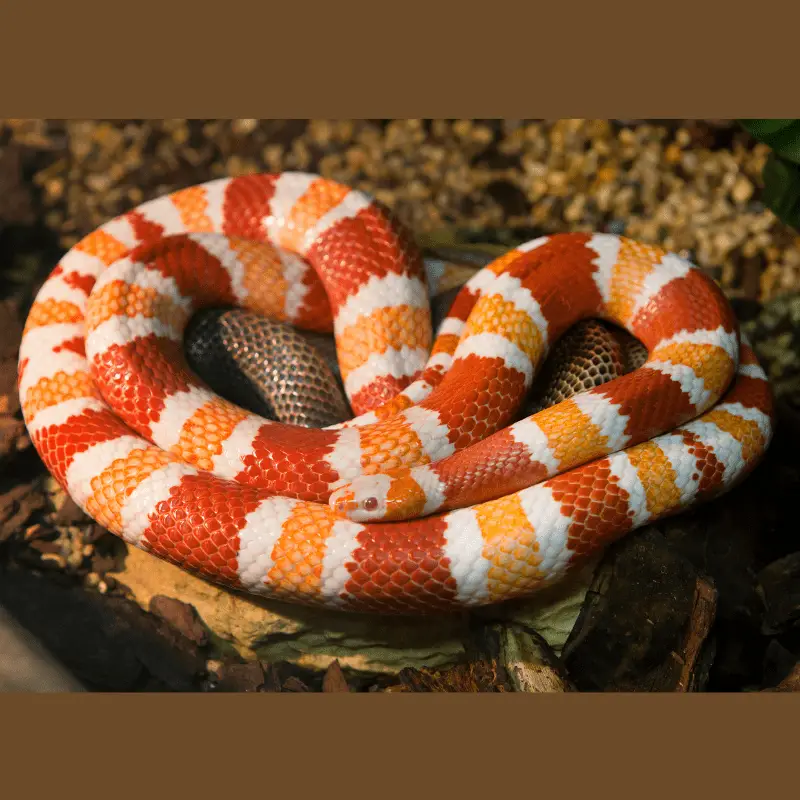
The Honduran milk snakes can be found in the wilds of Honduras, Nicaragua, and Costa Rica. Apart from that, milk snakes can also be found in the South Western United States. These snakes grow about 4 feet in length and come with bright red and black stripes. Between the black lines, there is a yellow or white band. These snakes are known as tricolour morphs. They are popular among pet owners. You can find several various coloured morphs bred in captivity.
Pueblan Milk Snake
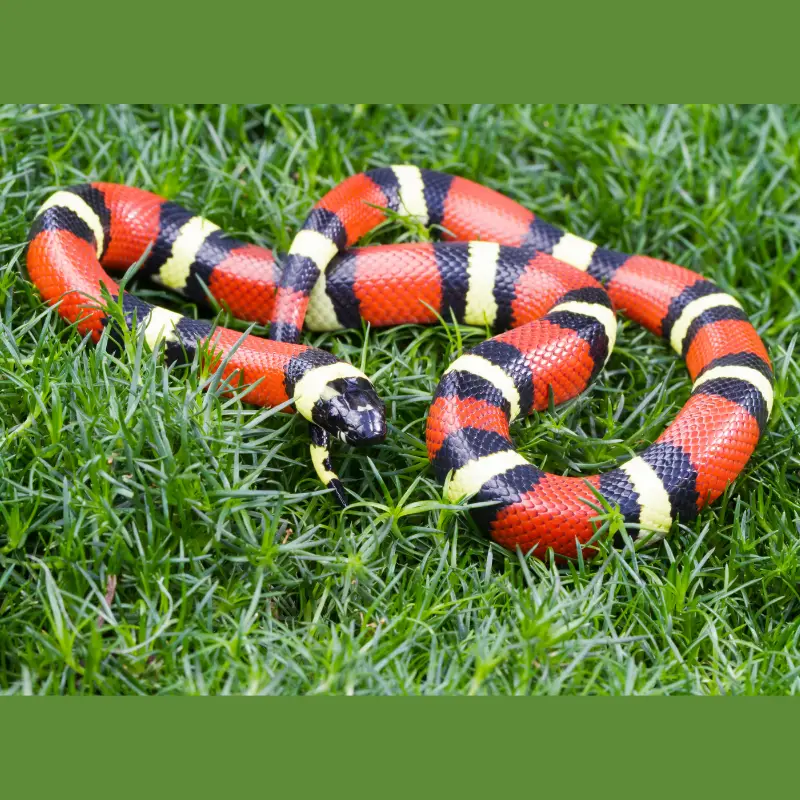
These snakes often get confused with the deadly coral snakes. The banding pattern of the snakes is mostly a combination of black, white, and red. Contrary to them, the coral snakes have red and yellow bands together.
These are popular snakes from the range as they are relatively small. These snakes are also known as the Campbell’s milk snakes. These snakes are native to Puebla, Oaxaca, and Morelos of Mexico.
Red Milk Snake
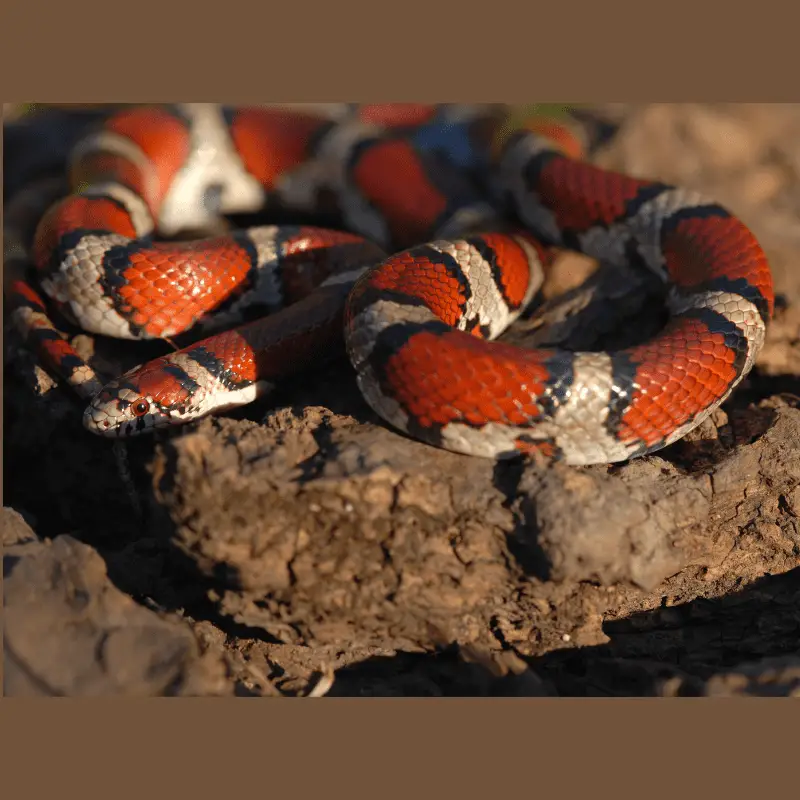
People often get confused these snakes with the venomous Coral snakes. These snakes have a yellow, white, or tan-coloured body with reddish blotches. These milk snakes are also relatively small in size. The average length of these snakes is somewhere between 21 and 28 inches.
The snakes can get aggressive if they feel threatened. However, they are considered as one of the excellent pet snake options. Like all other milk snake subspecies, these milk snakes are also non-venomous and do not pose any danger to humans. You can find red milk snakes in various parts of the Midwest and South sections of America. Such as Southern Illinois, Kentucky, Missouri, Iowa, Tennessee, Arkansas, and Southwest Indiana.

